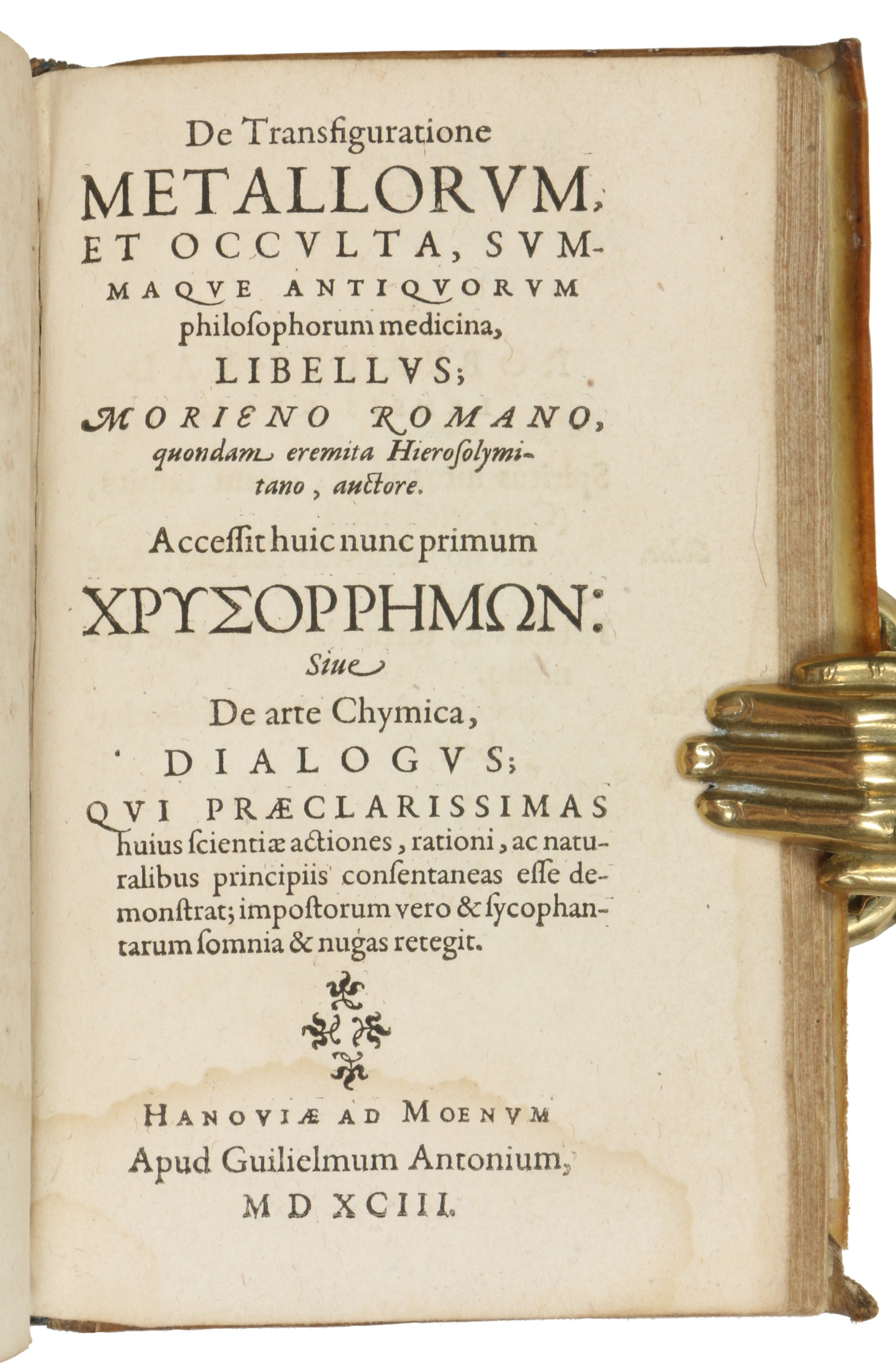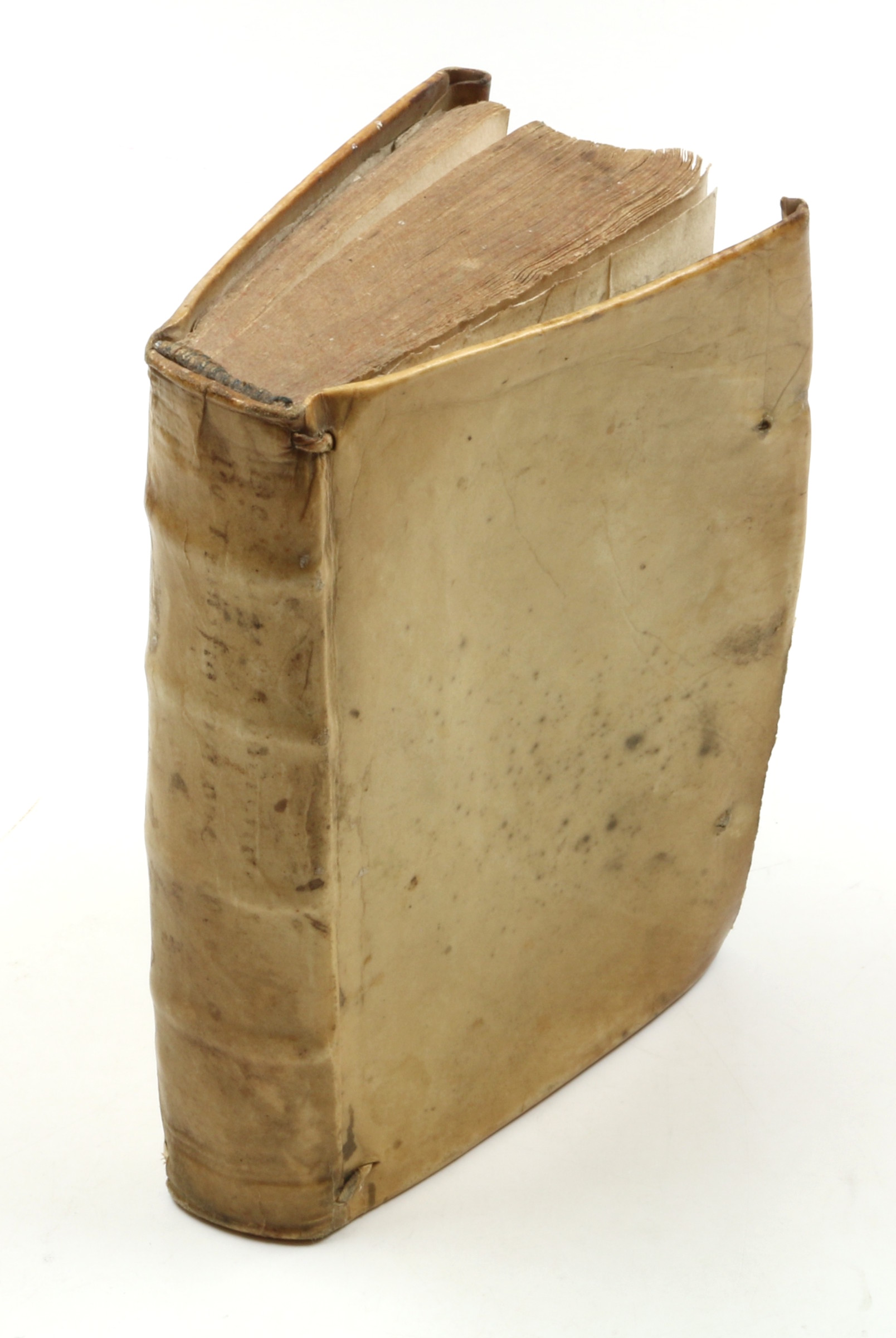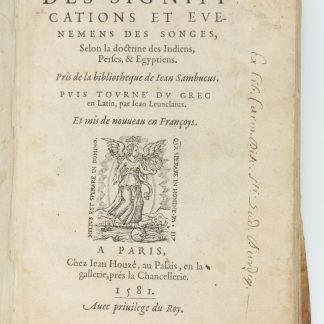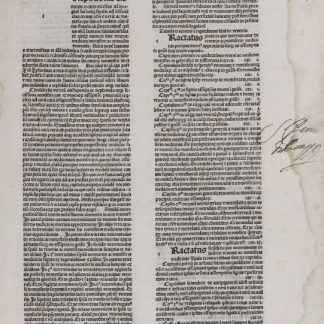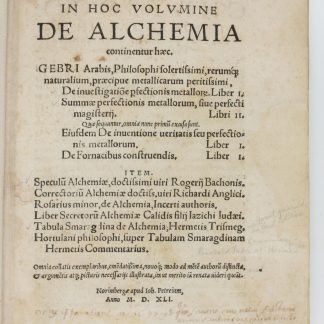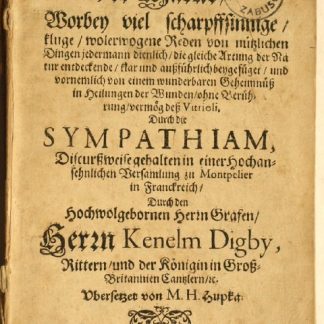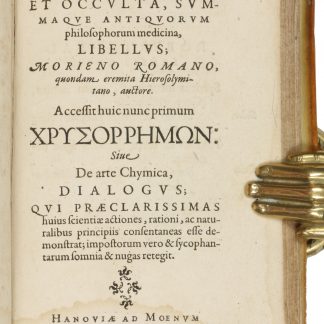An Arabic work on alchemy, quoted by Goethe
De transfiguratione metallorum, et occulta, summaque antiquorum philosophorum medicina, libellus. [Chrysorrhemon]: sive de arte chymica.
8vo. 79, (1) pp.
(Bound after) II: Mock, Jakob. De causis concretionis et dissolutionis rerum quarundam, tam extra quam intra corpus humanum. Tractatio historica, philosophica et medica, secundum veterum ac recentiorum placita descripta, & in tres partes distributa. Freiburg im Breisgau, Martin Böckler, 1596. (16), 288, (14) pp., final blank leaf. Contemporary full vellum; lacks ties.
€ 6,500.00
Final and best 16th century edition of this alchemical work originally written in Arabic, the first edition having appeared at Paris in 1559. The legendary Byzantine monk Morienus is said to have gone to Alexandria to study with the Arabian scholar Adfar, whose favourite student he became. Subsequently settling in Jerusalem as a hermit, he devoted his life to the hermetic arts before he learned that Khalid, the Sultan of Egypt, "was desirous to find some one who could interpret for him the writings of Hermes and of Adfar" (Ferguson II, 109). Morienus supposedly went to Egypt and instructed Khalid in the art of creating the elixir for the philosopher's stone. "The ultimate fate of Morienus is unknown, but his conversations with Kalid must have been committed to writing, and they may have come to the West about the time of the Crusades. They were in Arabic, but to make them available they were translated into Latin in February, 1182, by Robertus Castrensis, with a short preface" (Ferguson). No Arabic sources have been discovered, for which reason the attribution has been considered apocryphal, but the author does use chemical terminology with Arabic roots, such as "al-natron". The book marks the beginning of western preoccupation with alchemy, previously almost entirely unknown in medieval central Europe, and even Goethe quotes from it in his "Theory of Colours".
II: Bound first is a rare medical work by Jakob Mock, professor at Freiburg and a good friend of Fabricius Hildanus. This would seem to be part 1 only (caption title: "De aquarum quarundam affectionibus ratione coagulationis vel indurationis & dissolutinis, & alias"); no more published.
Unidentified 19th century library stamp to front pastedown. Covers slightly warped; long yapp edge of the vellum binding trimmed away along lower half of the book. Interior lightly browned, some light, mainly marginal spotting and brownstaining, a few darker spots occasionally affecting letters. Old handwritten ownership of "Claudius Cuppinius" on title-page of Mock's work, with an additional note in the same hand, dated 1691, on the flyleaf.
I: VD 16, M 6354. Wellcome 4458. Neu 2849. Duveen 413f. Schmieder, Geschichte der Alchemie, p. 123. Brüning 646. Mellon Collection 50 (illustrated p. 160). Cf. Ferguson II, 108f. Not in Adams or BM-STC German.
II: VD 16, M 5707. BM-STC German 623. Adams M 1528. Durling 3199. Wellcome 4372. Jöcher III, 563.

